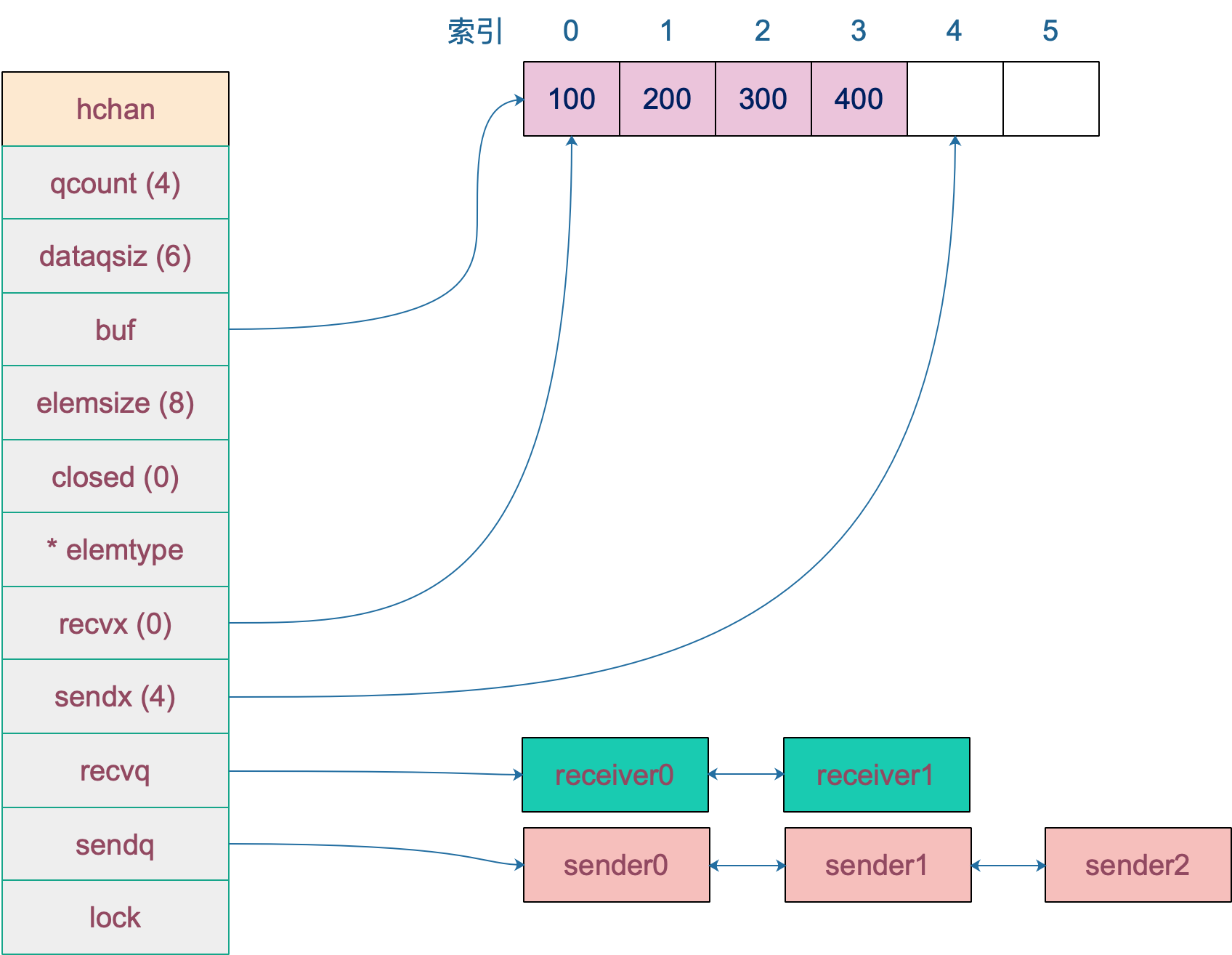Channel 的实现#
1.1 Channel 的结构#
Channel 的底层数据结构为 hchan,
1
2
3
4
5
6
7
8
9
10
11
12
13
14
15
16
17
18
19
20
21
22
23
24
25
| type hchan struct {
// chan 里元素数量
qcount uint
// chan 底层循环数组的长度
dataqsiz uint
// 指向底层循环数组的指针
// 只针对有缓冲的 channel
buf unsafe.Pointer
// chan 中元素大小
elemsize uint16
// chan 是否被关闭的标志
closed uint32
// chan 中元素类型
elemtype *_type // element type
// 已发送元素在循环数组中的索引
sendx uint // send index
// 已接收元素在循环数组中的索引
recvx uint // receive index
// 等待接收的 goroutine 队列
recvq waitq // list of recv waiters
// 等待发送的 goroutine 队列
sendq waitq // list of send waiters
// 保护 hchan 中所有字段
lock mutex
}
|

在实际使用中,Channel 通常有两个方向,即发送和接收,使用 make 语句初始化,得到的是 *hchan 类型的指针,在堆上分配对应的内存。
1
2
| ch1 := make(chan int)
ch2 := make(chan int, 10) // 缓冲型 Channel
|
1.2 Channel 的接收#
接受操作有两种表达式:带 comma 和不带 comma,在底层中执行 chanrecv 函数。
// TODO: source code
1.3 Channel 的发送#
1.4 Select#
每个 case 都对应一个 channel,
- 如果没有 channel 可以执行,执行 default;如果没有 default,阻塞。
- 如果有一个 channel 可以执行,选择并执行。
- 如果有多个 channel 可以执行,任意选择一个执行。
1
2
3
4
5
6
7
8
9
| select {
case <- channel1:
// 执行的代码
case value := <- channel2:
// 执行的代码
case channel3 <- value:
// 执行的代码
default:
}
|
1.5 context#
context 主要用来在 goroutine 之间传递上下文信息,包括取消信号、超时时间、截止时间、k-v 等,常见于并发控制和超时控制,并发安全。
http 请求。
go routine 的取消:
1
2
3
4
5
6
7
8
9
10
11
12
13
14
| func Perform(ctx context.Context) {
for {
calculatePos()
sendResult()
select {
case <-ctx.Done():
// 被取消,直接返回
return
case <-time.After(time.Second):
// block 1 秒钟
}
}
}
|
增加一个 context,在 break 前调用 cancel 函数,取消 goroutine。gen 函数在接收到取消信号后,直接退出,系统回收资源。
1
2
3
4
5
6
7
8
9
10
11
12
13
14
15
16
17
18
19
20
21
22
23
24
25
26
27
28
29
30
| func gen(ctx context.Context) <-chan int {
ch := make(chan int)
go func() {
var n int
for {
select {
case <-ctx.Done():
return
case ch <- n:
n++
time.Sleep(time.Second)
}
}
}()
return ch
}
func main() {
ctx, cancel := context.WithCancel(context.Background())
defer cancel() // 避免其他地方忘记 cancel,且重复调用不影响
for n := range gen(ctx) {
fmt.Println(n)
if n == 5 {
cancel()
break
}
}
// ……
}
|
